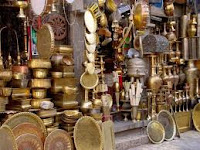Good wishes on behalf of Phila Tours & Travels to all of you. After completion of winter, awaiting the spring time and this is the time for Indians to celebrate the festival called Holi, the festival of colors today we are going to inform you about this festival, its significance in India and different reasons and ways of celebration as per ancient mythological stories and culture of India.
.jpg)

India is a land of rich culture and festivals are an integral part of every Indian’s life. Here, a festival presents a glimpse of different traditions and customs. After the winter season, arrives the spring season when everywhere one can see blossom of colorful flowers, this is the time of Holi Festival, a Hindu festival of natural beauty. It is celebrated every year on the Purnima (full moon) of Phalgun month, which comes during the month of March every year. 'Holi' is festival to offer prayer to the Almighty as thanksgiving for good harvest. In 2013, Holi, the festival of colors will be celebrated on 27th March. The festival of Holi is also known as Dulhandi.
This festival is celebrated to mark the good crop during the season in the villages. Besides this, it also has connections with the mythological characters such as...
Prahlad being son of evil king Hiranyakashyap, was a devotee of Lord Vishnu and his father the king did not like him praying to God, told him to stop and threatened to burn alive, in which King's sister Holika was to help in this evil thing, but with the blessings of Lord Vishnu, Prahlad was saved from the fire and Holika got burnt and Lord Vishnu took the incarnation of Narsinh avatar as half human and half lion and took the life of Evil King Hiranyakashyap.

The second story goes as Kansa the King was afraid of his life being taken by Lord Krishna so he set Putna, his evil sister to kill Krishna during his small age, but being an incarnation of Lord Vishnu, Krishna came to know about the evil plan and killed Putna and came out safe and sound, thus the celebration of happiness with colours in Mathura for win of Good over Evil.

It is also said that Lord Shiva, after his consort Sati committed to fire due to disgrace by her father to lord Shiva, left his worldly duties as God and went in deep meditation, at that time Kaamdeva the God of Love, was asked by other Gods to throw the powerful arrow of love on Lord Shiva to make him distracted from the meditation and again involving him into the matters of Earth. But being distracted from meditation, Lord Shiva got angry and opened his third eye and burnt Kaamdeva into ashes, on this, Rati, Kaamdeva’s consort and assistant pleaded and he was brought back to life by Lord Shiva. But Shiva relented and granted her the boon that she could see her husband but he would remain without a physical form.


Well, all in all, the Indian mythology, culture and customs go hand in hand and the celebration of festival takes the modern acceptance of life too. This festival is celebrated for two days, first night is to commemorate the victory of good over evil, as mentioned in those three stories above and a bone-fire is lightened and prayers are made around it to worship Gods and accepting their power in the world. This tradition is also followed in Gujarat and Orissa. To render gratefulness to Agni, the God of Fire, gram and stalks from the harvest are also offered to Agni, which includes raw mango, coconut and freshly harvested Saptdhanya (seven types of grains and pulses such as Wheat, rice, barley, lentils etc.) with all humility. Ash left from this bonfire is also considered sacred and people apply it on their foreheads.
And as normal to Indians, all festivals will have its own celebration with food and drinks, on this day of Holi the special drink of Bhang (made out of leaves and buds of cannabis) is consumed by adults and sweet food items like Gujiya, Malpuas, Mathri, Puran Poli are enjoyed to topping celebration to crunch hunger by adults and children alike. Later in the evening the celebration is normalized with people visiting their elders, relatives and friends and exchanging the wishes, sweets and hugs in a dignifying manners.
It is said the spirit of Holi encourages the feeling of brotherhood in society and even the enemies turn friend on this day. People of all communities and different religions all come together and participate in this joyous and colorful festival and strengthen the secular fabric of the nation. So, with this article we from Phila Tours & Travels wish you all a happy celebration and may you have peace prosperity and strength of friends and family with you. Let us all come together and celebrate holi by listening to this Holi Song….

































.jpg)














.jpg)

